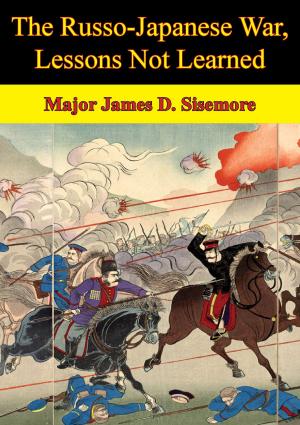The Decisiveness Of Israeli Small-Unit Leadership On The Golan Heights In The 1973 Yom Kippur War
Nonfiction, History, Middle East, Israel, Military| Author: | Major Oakland McCulloch | ISBN: | 9781786251374 |
| Publisher: | Tannenberg Publishing | Publication: | November 6, 2015 |
| Imprint: | Tannenberg Publishing | Language: | English |
| Author: | Major Oakland McCulloch |
| ISBN: | 9781786251374 |
| Publisher: | Tannenberg Publishing |
| Publication: | November 6, 2015 |
| Imprint: | Tannenberg Publishing |
| Language: | English |
This study is an analysis of the decisiveness of Israeli small-unit leadership on the Golan Heights during the 1973 Yom Kippur War. What allowed the Israeli brigades on the Golan Heights to defeat an Arab coalition that launched a surprise attack with a force that vastly outnumbered the Israelis in men, tanks and artillery? The one advantage the Israelis had was the quality of leadership at the small-unit level. This study begins with a brief review of the strategic and operational situation in the Middle East in 1973. This includes background information on the Israeli and Arab forces facing each other on the Golan Heights and their plans for the defense and attack respectfully prior to the start of hostilities. The majority of the thesis discussion is concerned with the actual battle on the Golan Heights. It highlights the contributions that small-unit leadership made during the battle that allowed the vastly outnumbered IDF to destroy a massive Soviet-style Arab army. This portion of the study also looks at the experiences of those Israeli leaders involved in the fighting. The study then looks at leadership from the Israeli perspective. I define what leadership is and why it is important at the small-unit level. I take a close look at how the Israeli Defense Force (IDF) picks and trains its leaders and what role the Israeli Military Culture plays in that process. The conclusion of the thesis is that the IDF was able to fight and win even though surprised and vastly outnumbered due to the quality of leadership at the small-unit level. This lesson may prove to be important still today as the armies of the Western societies continue to get smaller even though they still face the threat of fighting the massive Soviet-style armies of the “Axis of Evil” for decades to come.
This study is an analysis of the decisiveness of Israeli small-unit leadership on the Golan Heights during the 1973 Yom Kippur War. What allowed the Israeli brigades on the Golan Heights to defeat an Arab coalition that launched a surprise attack with a force that vastly outnumbered the Israelis in men, tanks and artillery? The one advantage the Israelis had was the quality of leadership at the small-unit level. This study begins with a brief review of the strategic and operational situation in the Middle East in 1973. This includes background information on the Israeli and Arab forces facing each other on the Golan Heights and their plans for the defense and attack respectfully prior to the start of hostilities. The majority of the thesis discussion is concerned with the actual battle on the Golan Heights. It highlights the contributions that small-unit leadership made during the battle that allowed the vastly outnumbered IDF to destroy a massive Soviet-style Arab army. This portion of the study also looks at the experiences of those Israeli leaders involved in the fighting. The study then looks at leadership from the Israeli perspective. I define what leadership is and why it is important at the small-unit level. I take a close look at how the Israeli Defense Force (IDF) picks and trains its leaders and what role the Israeli Military Culture plays in that process. The conclusion of the thesis is that the IDF was able to fight and win even though surprised and vastly outnumbered due to the quality of leadership at the small-unit level. This lesson may prove to be important still today as the armies of the Western societies continue to get smaller even though they still face the threat of fighting the massive Soviet-style armies of the “Axis of Evil” for decades to come.



![Cover of the book Fueling the Fires of Resistance — Army Air Forces Special Operations in the Balkans during World War II [Illustrated Edition] by Major Oakland McCulloch](https://www.kuoky.com/images/2015/november/300x300/9781786252401-xnBm_300x.jpg)






![Cover of the book Breaking The Mold: Tanks In The Cities [Illustrated Edition] by Major Oakland McCulloch](https://www.kuoky.com/images/2014/august/300x300/9781782894445-WpCv_300x.jpg)

![Cover of the book My Clan Against The World: US And Coalition Forces In Somalia, 1992-1994 [Illustrated Edition] by Major Oakland McCulloch](https://www.kuoky.com/images/2014/august/300x300/9781782896623-Rw2c_300x.jpg)
![Cover of the book A House In Bali [Illustrated Edition] by Major Oakland McCulloch](https://www.kuoky.com/images/2015/november/300x300/9781786256232-Jvnm_300x.jpg)

